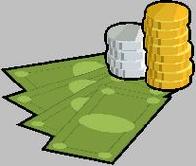
 |
|
| Financial Terms | |
| Inventory returns |
|
Information about financial, finance, business, accounting, payroll, inventory, investment, money, inventory control, stock trading, financial advisor, tax advisor, credit.
Main Page: investment, tax advisor, accounting, business, financial, payroll, inventory, financial advisor, |
Definition of Inventory returns
Inventory returnsinventory returned from a customer for any reason. This receipt
Related Terms:CARs (cumulative abnormal returns)a measure used in academic finance articles to measure the excess returns an investor would have received over a particular time period if he or she were invested in a particular stock. Abnormal returnsPart of the return that is not due to systematic influences (market wide influences). In Blanket inventory lienA secured loan that gives the lender a lien against all the borrower's inventories. Days' sales in inventory ratioThe average number of days' worth of sales that is held in inventory. Excess returnsAlso called abnormal returns, returns in excess of those required by some asset pricing model. InventoryFor companies: Raw materials, items available for sale or in the process of being made ready for Inventory loanA secured short-term loan to purchase inventory. The three basic forms are a blanket  Inventory turnoverThe ratio of annual sales to average inventory which measures the speed that inventory Just-in-time inventory systemsSystems that schedule materials/inventory to arrive exactly as they are INVENTORY TURNOVERThe number of times a company sold out and replaced its average stock of goods in a year. The formula is: MERCHANDISE INVENTORYThe value of the products that a retailing or wholesaling company intends to resell for a profit. InventoryGoods bought or manufactured for resale but as yet unsold, comprising raw materials, work-in-progress and finished goods. InventoryThe cost of the goods that a company has available for resale. Periodic inventory systemAn inventory system in which the balance in the inventory account is adjusted for the units sold only at the end of the period. Perpetual inventory systemAn inventory system in which the balance in the inventory account is adjusted for the units sold each time a sale is made. Purchase returnsA contra account that reduces purchases by the amount of items purchased that were subsequently returned.  Sales returnsA contra account that offsets revenue. It represents the amount of sales made that were later returned. inventory shrinkageA term describing the loss of products from inventory inventory turnover ratioThe cost-of-goods-sold expense for a given inventory write-downRefers to making an entry, usually at the close of a Inventory Turnover RatioProvides a measure of how often a company's inventory is sold or dollar days (of inventory)a measurement of the value of inventory for the time that inventory is held vendor-managed inventorya streamlined system of inventory Average inventoryThe beginning inventory for a period, plus the amount at the end of Book inventoryThe amount of money invested in inventory, as per a company’s Finished goods inventoryGoods that have been completed by the manufacturing Moving average inventory methodAn inventory costing methodology that calls for the re-calculation of the average cost of all parts in stock after every purchase.  Perpetual inventoryA system that continually tracks all additions to and deletions Raw materials inventoryThe total cost of all component parts currently in stock that Work-in-process inventoryinventory that has been partially converted through the InventoryGoods that a firm stores in anticipation of its later sale or use as an input. Average-Cost Inventory MethodThe inventory cost-flow assumption that assigns the average First-In, First-Out (FIFO) Inventory MethodThe inventory cost-flow assumption that InventoryThe cost of unsold goods that are held for sale in the ordinary course of business or Inventory DaysThe number of days it would take to sell the ending balance in inventory at the Inventory ShrinkageA shortfall between inventory based on actual physical counts and inventory Last-In, First-Out (LIFO) Inventory MethodThe inventory cost-flow assumption that assigns the most recent inventory acquisition costs to cost of goods sold. The earliest inventory ABC inventory classificationA method for dividing inventory into classifications, Distribution inventoryinventory intended for shipment to customers, usually Ending inventoryThe dollar value or unit total of goods on hand at the end of an Finished goods inventoryCompleted inventory items ready for shipment to Fluctuation inventoryExcess inventory kept on hand to provide a buffer against Hedge inventoryExcess inventories kept on hand as a buffer against contingent Inactive inventoryParts with no recent prior or forecasted usage. In-transit inventoryinventory currently situated between its shipment and delivery InventoryThose items included categorized as either raw materials, work-inprocess, Inventory adjustmentA transaction used to adjust the book balance of an inventory Inventory diversionThe redirection of parts or finished goods away from their intended Inventory issueA transaction used to record the reduction in inventory from a location, Inventory receiptThe arrival of an inventory delivery from a supplier or other Inventory turnoverThe number of times per year that an entire inventory or a Maximum inventoryAn inventory item’s budgeted maximum inventory level, Minimum inventoryAn inventory item’s budgeted minimum inventory level. Net inventoryThe current inventory balance, less allocated or reserved items. Obsolete inventoryParts not used in any current end product. Periodic inventoryA physical inventory count taken on a repetitive basis. Perpetual inventoryA manual or automated inventory tracking system in which Physical inventoryA manual count of the on-hand inventory. Reconciling inventoryThe process of comparing book to actual inventory balances, Seasonal inventoryVery high inventory levels built up in anticipation of large Surplus inventoryParts for which the on-hand quantity exceeds forecasted Vendor-managed inventoryThe direct management and ownership of selected Inventory TurnoverRatio of annual sales to inventory, which shows how many times the inventory of a firm is sold and replaced during an accounting period. Book ReturnsBook yield is the investment income earned in a year on a portfolio of assets purchased over a number of years and at different interest rates, divided by the book value of those assets. Related to : financial, finance, business, accounting, payroll, inventory, investment, money, inventory control, stock trading, financial advisor, tax advisor, credit. |